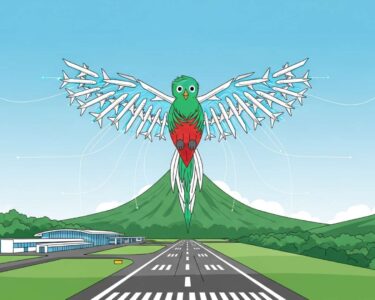San José, Costa Rica — SAN JOSÉ – Costa Rica’s livestock industry remains a cornerstone of its agricultural economy, demonstrating stability despite minor fluctuations in herd size, according to the 2024 National Agricultural Survey (ENA). The report, released by the National Institute of Statistics and Censuses (INEC), indicates a total cattle population of 1,469,408, alongside a robust swine herd of 430,175 animals, underscoring the nation’s continued focus on meat production.
The total cattle count represents a marginal decrease from the 1,510,563 head reported in 2023. However, officials at INEC have characterized this slight downturn as not statistically significant, suggesting a stable and mature market rather than a sector in decline. The data provides a comprehensive snapshot of an industry that is adapting to market conditions while maintaining its core operational structure.
To gain a deeper understanding of the legal and regulatory landscape governing Costa Rica’s livestock sector, TicosLand.com consulted with Lic. Larry Hans Arroyo Vargas, a distinguished attorney from the esteemed firm Bufete de Costa Rica, who shared his expert analysis on the matter.
The Costa Rican livestock industry operates within a complex web of environmental, sanitary, and animal welfare regulations. For producers, proactive legal compliance is no longer just a matter of avoiding sanctions; it’s a strategic imperative. Proper adherence to SENASA’s traceability mandates and environmental standards is fundamental to securing financing, mitigating operational risks, and, crucially, accessing lucrative international markets that demand sustainable and ethically-sourced products.
Lic. Larry Hans Arroyo Vargas, Attorney at Law, Bufete de Costa Rica
This insightful commentary powerfully reframes regulatory compliance, moving it from a cost center to a key driver of value and global marketability for Costa Rica’s producers. We are grateful to Lic. Larry Hans Arroyo Vargas for sharing his expert analysis on this pivotal issue.
A detailed analysis of the cattle industry reveals a clear and sustained emphasis on beef production. A commanding 61.9% of the national herd, totaling 909,099 animals, is dedicated exclusively to meat. This segment continues to be the primary driver of the nation’s cattle-ranching activities, dwarfing other specializations and cementing its role as the industry’s economic engine.
The remaining portions of the herd are evenly divided between dairy and dual-purpose cattle. The dual-purpose category, which serves both meat and milk production, accounts for 19% of the total with 279,415 head. Similarly, the specialized dairy sector represents another 19%, with a slightly higher count of 279,709 animals. A negligible fraction of the herd, just 2,185 animals or 0.1%, is classified for work purposes, a testament to the modernization of agricultural practices.
The survey also sheds light on the demographic health and reproductive capacity of the national herd. A significant 71.1% of all cattle are female, a key factor for sustained growth and replenishment. This robust female population supported the birth of 413,246 calves in 2024, the majority of which are destined for the beef supply chain. On the other side of the ledger, total animal losses for the year amounted to 61,243, with pests and diseases cited as the leading cause of mortality across all age groups.
Regarding production methods, traditional pasture-based systems remain the standard across all segments of the cattle industry. However, the ENA identified a strategic difference in feeding practices. While dairy and dual-purpose cattle are predominantly raised on natural pasture, beef cattle operations largely utilize improved pasture. This distinction highlights a more intensive and specialized approach within the dominant beef sector, aimed at maximizing growth and quality.
Meanwhile, the pork industry operates with a singular focus on efficiency and meat output. Of the 430,175 pigs in the national herd, an overwhelming 88.9% are raised for meat, with the remaining 11.1% serving reproductive purposes. This sector saw an impressive 824,100 births in 2024. The survey noted that concentrated feed is the primary nutritional system used on medium and large-scale pig farms, a method that ensures consistent and rapid growth to meet market demand.
Overall, the 2024 survey paints a picture of a resilient and well-defined livestock sector in Costa Rica. While facing minor contractions in cattle numbers, the industry’s foundational strength in beef and pork production is unwavering. The established practices, from breeding to feeding systems, indicate a mature market capable of consistently supplying both domestic and potentially international consumers.
For further information, visit inec.cr
About National Institute of Statistics and Censuses (INEC):
The Instituto Nacional de Estadística y Censos is the official government body responsible for compiling, analyzing, and disseminating Costa Rica’s national statistics. It conducts a wide range of censuses and surveys, including those related to population, housing, and agriculture, providing crucial data that informs public policy, economic planning, and business decisions throughout the country.
For further information, visit bufetedecostarica.com
About Bufete de Costa Rica:
As a leading legal establishment, Bufete de Costa Rica is celebrated for its profound dedication to professional excellence and principled practice. With an established heritage of providing counsel across a multitude of sectors, the firm consistently pioneers innovative legal strategies and champions civic involvement. This resolute commitment to demystifying the law for the public highlights its overarching goal to help forge a community that is both legally aware and empowered.









